Weaving Craft with Architecture

As part of the ODOP initiative, the district of Agra has been identified as a hub for the production of leather and leather goods. In line with this, the Common Facilitation Centre (CFC) Agra in a Rural Area has been developed to provide technical support and services specifically to the Leather industry in the region.
The primary aim of the CFC Agra is to improve the quality of Leather products produced in the region and enhance the industry’s competitiveness in both domestic and international markets.
To achieve this objective, the CFC Agra offers a range of services to Leather products manufacturers in the region, including training, product development, testing and quality control, and marketing support. The centre is equipped with state-of-the-art technology and machinery to provide these services to the industry. By providing technical support and services, CFC Agra can play a significant role in the growth and development of the leather product manufacturing industry.
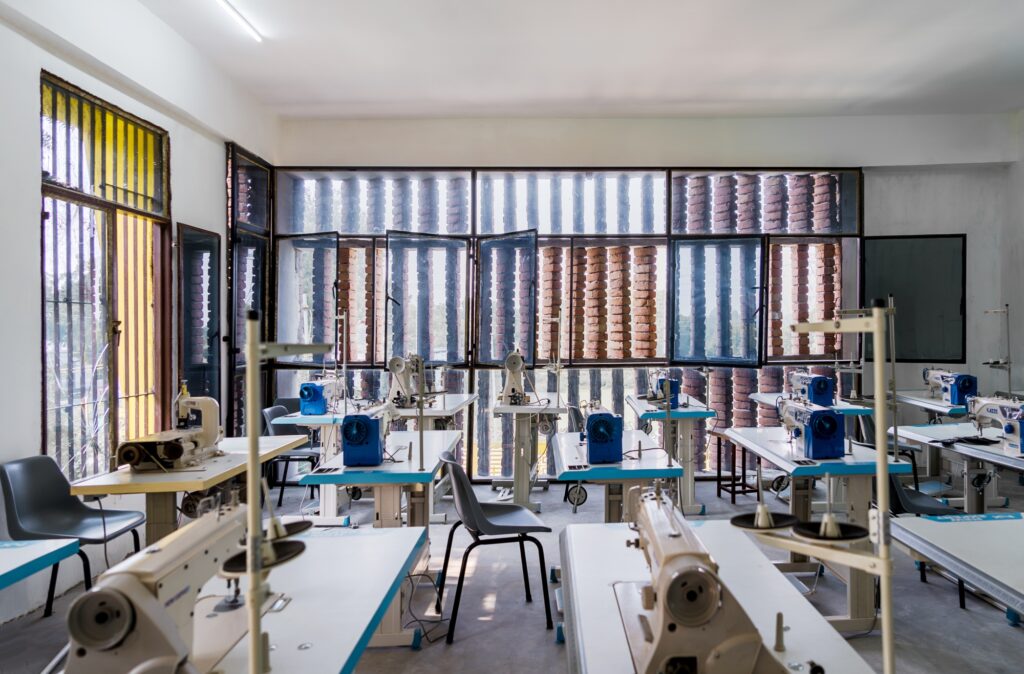
Establishing several Common Facilitation Centres in various districts of Uttar Pradesh with the purpose to give each building their unique identity still keeps all of them in common harmony concerning their intention of purpose.
The CFC Agra has been intended to explore the role and relationship of Community, Craft, and Space in this project by creating emphasis on internal spaces that facilitate the learning and innovation in craftwork amongst artisans.
Here material vocabulary played a significant role in balancing tranquillity in this Common Facilitation Centre. Exposed brickwork and brick jaali are not only design elements but create similar environments that connect humans with the built space and support the action of craft-sensitive spaces.
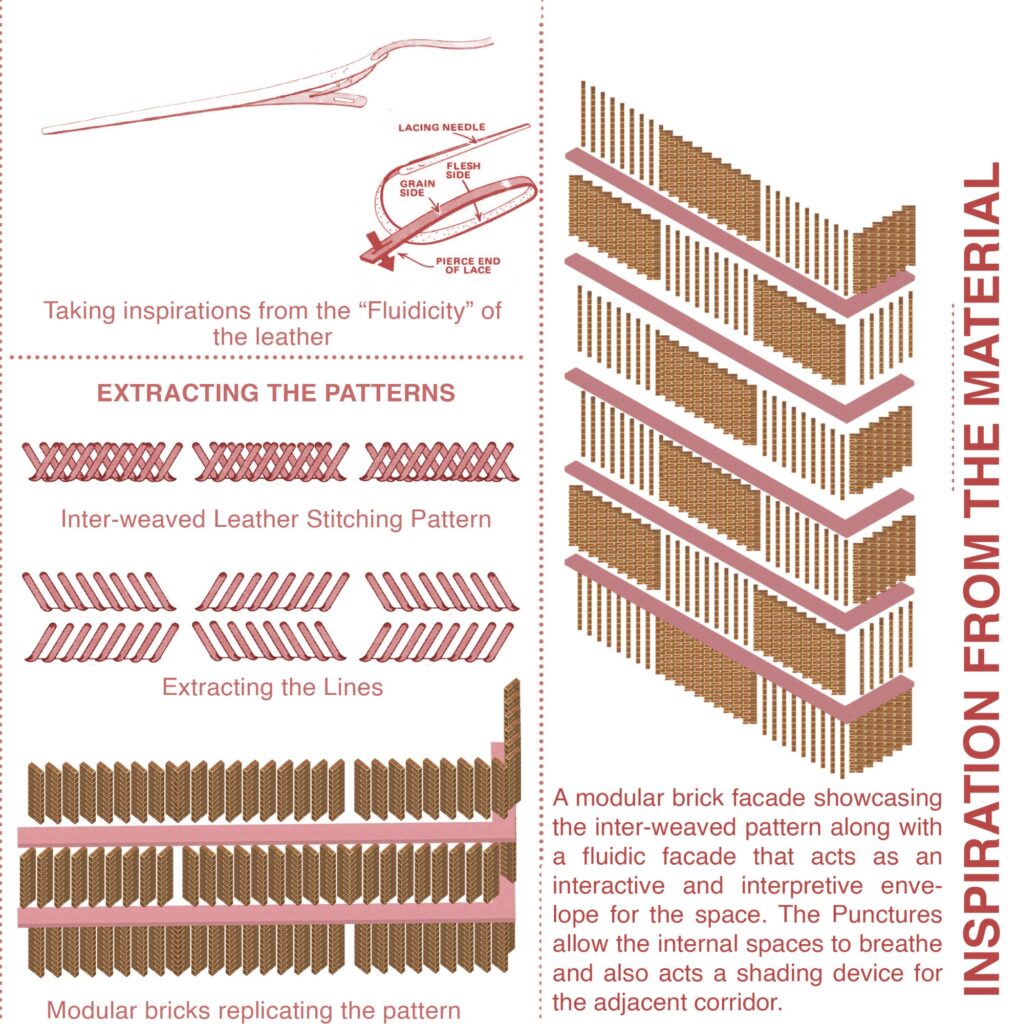
The design intends to bring people together under one roof, encourage community learning and further promote human development in all dimensions.
For providing artisans a platform to learn, practice, and showcase their art as a final product, the project aims to provide an amalgamation of a social, economic, and communal training facility. It further aims to contribute employment to youth & artisans, preserve and development of local crafts/skills, promotion of the Art as well as to build up a mutual rapport, and also develop the much-needed cooperative attitude towards the industry. Along with providing communal learning and working centres, restoration of artisan’s houses and individual workplaces was also carried out under the scope of the project.
Context, Community, Craft and Space
The core ideology of the design has been evolved by the concept of lacing of loops of threads for weaving of leathers. The concept has been generated the interpretation of ideas of the craft through processing of raw material up to final finished products. The inspiration has been developed with the fluidity of the leather and its properties. The concept has been incorporated inn the design with the play of the building material and building facades and fenestrations. The technique of the lacing of the loops through the leather creates the inter-weaving leather stitching pattern. These derived patterns are aligned in such a fashion to create a façade design with the play of the material like exposed brick work. The concept of using the exposed brick work is to gain the genuine and original relief and the texture of faced through its material, just like the leather.
A modular brick façade showcasing interwoven patterns and a fluidic façade acting as an interpretive envelope for the space would create a visually captivating and dynamic architectural design. The punctures allow the internal spaces to breathe and also acts a shading device for the adjacent corridor.

Design Development
The design concept of the common facilitation centre is based on the division of the entire premise into three zones to cater to the diverse user groups. The public zone comprises a large foyer with interactive nodes and informative areas for visitors. The social interactive zone consists of a multifunctional courtyard followed by open exhibition spaces, which create a visual connection between the floors. This space directly depicts the manufacturing process of finished products. The private zone includes the backbone of the common facilitation centre, including the workshop area and open terrace.



The design of the common facilitation centre reflects the ideology of user-sensitive spaces, which includes shared community spaces with a large courtyard in the centre, acting as an intermediate breakout space. The spaces are designed with the intent to serve as multi-functional areas for various operations such as a design centre, display area, training and development area, and open sessions of the craft.
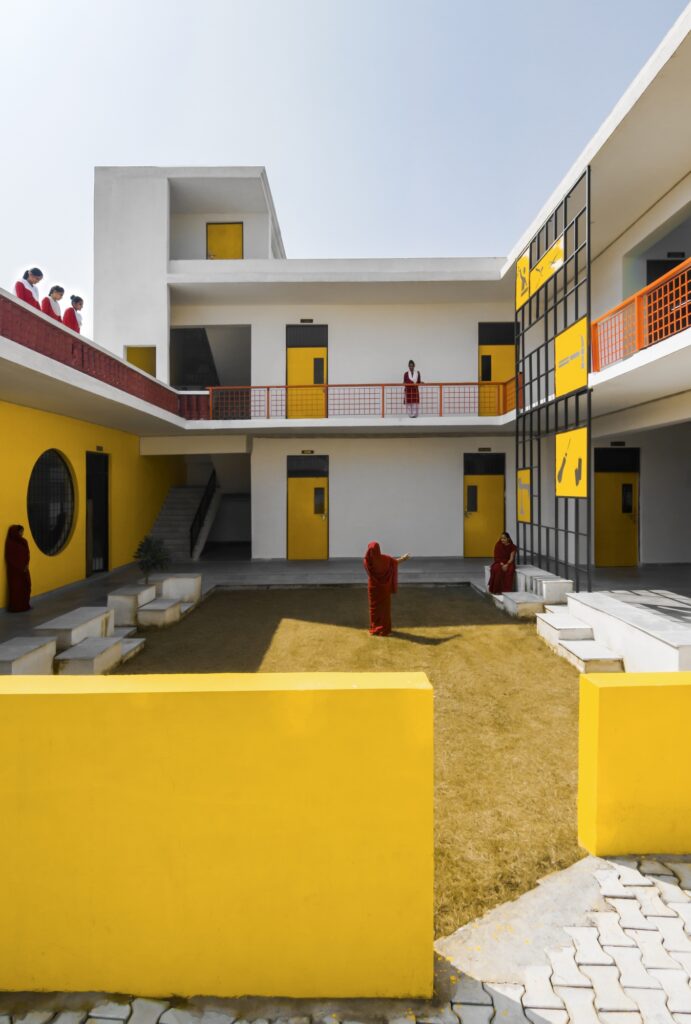
The intent becomes more definite by collaborating the recreational spaces, breakout spaces, and interactive spaces. The extensive breakout space has multi-dimensional usages and can act as display areas for the crafts, open expo venue or exhibition spaces, and leisure activities like stepped seating and shared community interactive area.

Moreover, the congregational space is embedded with green spaces, which acts as an extended working area. The entire premise is planned with an aim to cater to the vitality of the various user groups of the common facilitation centre. The design evolution takes inspiration from the high-end craftsmanship required to achieve the desired aesthetics through the façade, which included intricate implementation of the weaving pattern from brick. The use of bright colour palette in the design was a conscious decision, aimed at breaking the typical perception of colour scheme and considering social acceptability and climate considerations, the glass windows were incorporated behind the exposed brick jali façade.
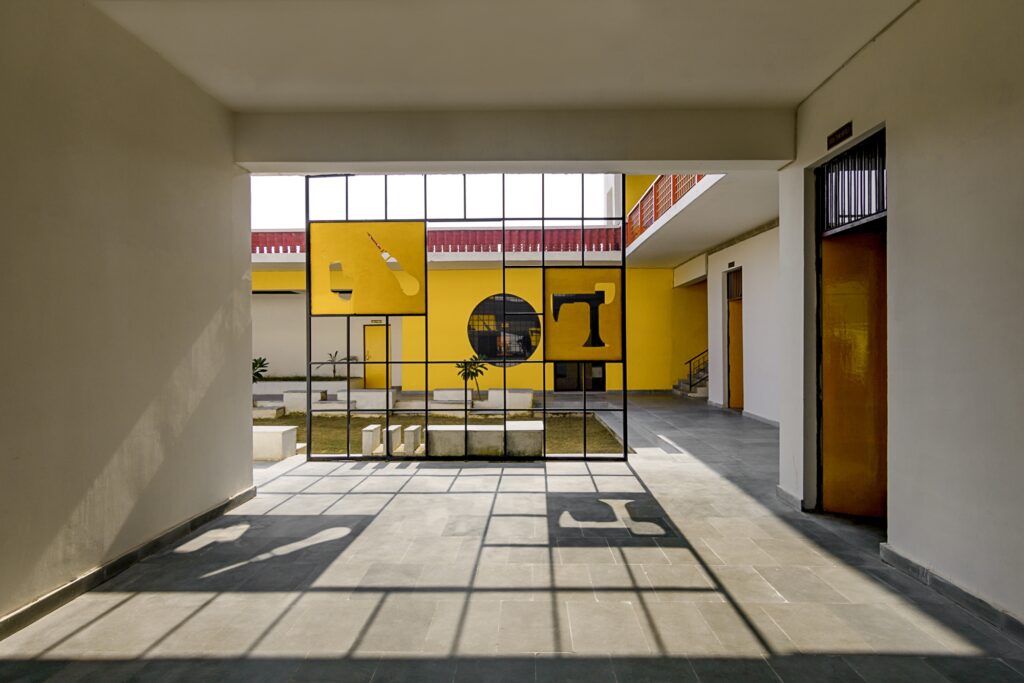
In essence, the common facilitation centre is a well-planned and meticulously designed space that caters to the diverse user groups, and encourages community learning and working. The extensive breakout space and the multifunctional courtyard serve as flexible spaces that can be utilized for a variety of purposes, such as exhibitions, training sessions, or leisure activities.
The incorporation of green spaces and the use of bright colour palette reflects the sensitivity towards social and environmental aspects, making it a well-rounded and thoughtfully designed premise.
Challenges and opportunities
Achieving optimal results in terms of the development of the façade required intricate implementation of the weaving pattern with bricks. This proved to be a particularly challenging task. The desired aesthetic appeal of the façade demanded high-end craftsmanship working with class A common burnt clay bricks.
To maintain contextual relevance and social acceptability, the design incorporated glass windows behind the exposed brick jali façade while taking climate considerations into account. The use of a bright colour palette in the design, thus breaking the perception of the typical colour scheme, was introduced in keeping with the ideology of social acceptability.

Project Facts
Project Name: Common Facilitation Centre, Agra
Architectural Consultancy: Node Urban Lab LLP, Lucknow
Principal Architects: Ar. Rahul Jadon, & Ar. Rahul Kardam
Design Team: Shubham Singh, Mohd. Faisal, Pankaj Kumar Sonkar.
Structural Design: Balaji Engineering Consultant, New Delhi
Photo Credits: Harsh Nigam
Project Completion Year: 2022



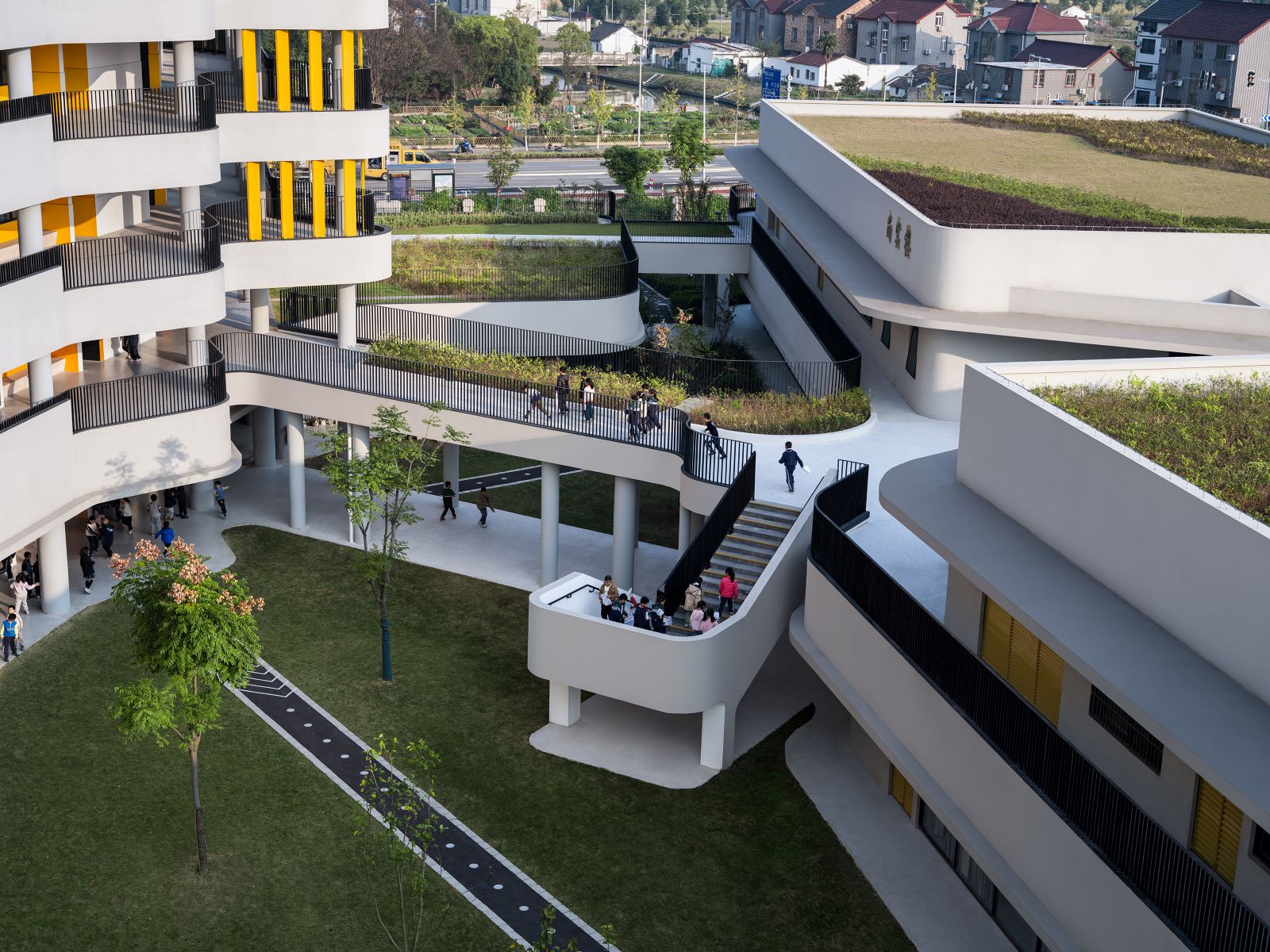



One Response
Amazing thoughts well crafted design philosophy